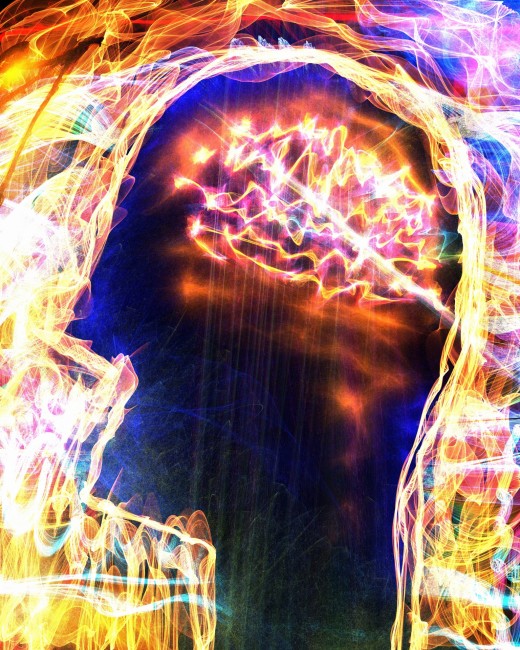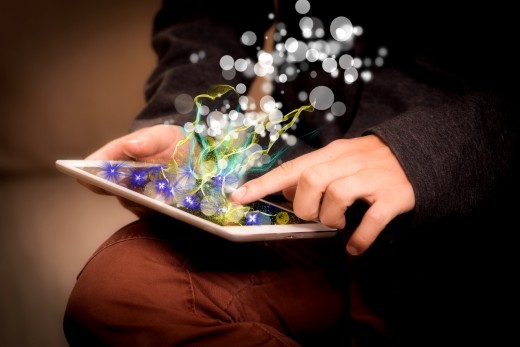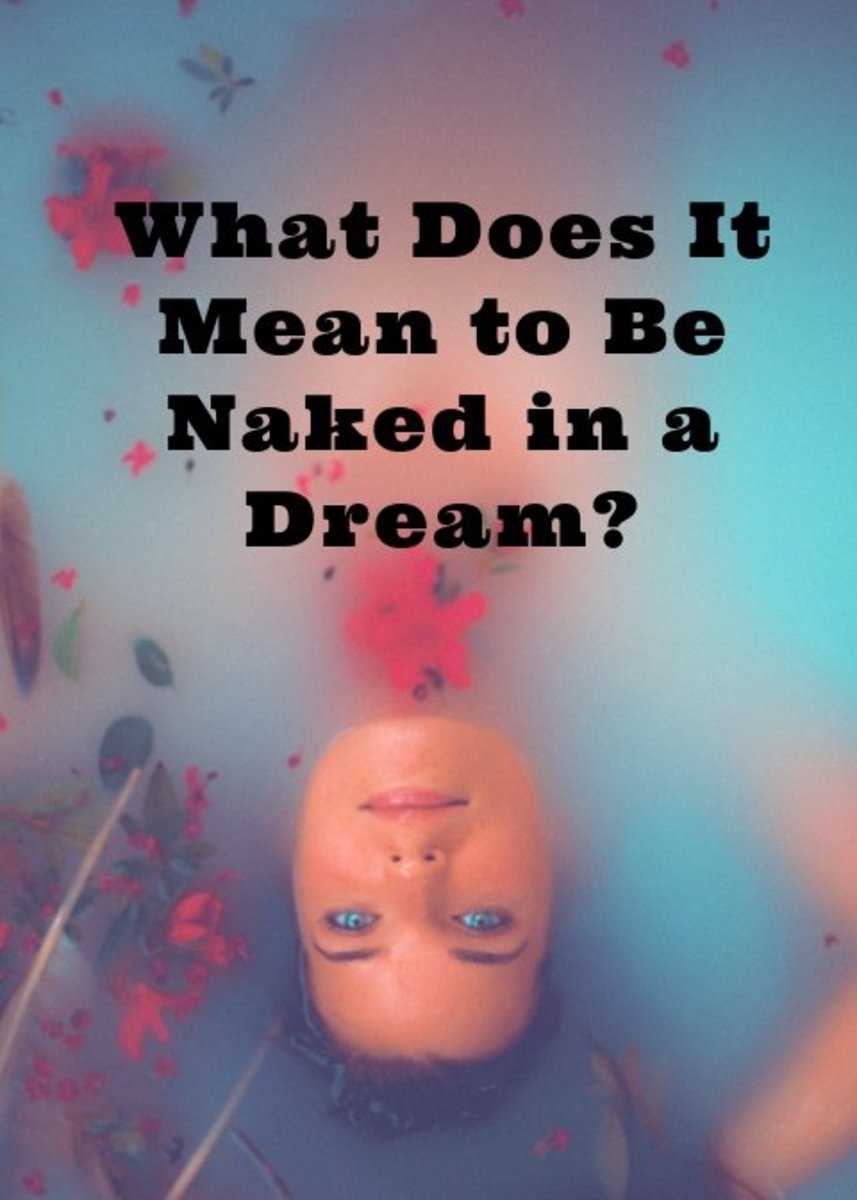The Phenomenon of Synesthesia
Based on the article titled Hearing Colors and Tasting Shapes, synesthesia is real. The articles summarize how cross wiring in the brain is to blame for the phenomenon of synesthesia occurring. It even says that this condition is hereditary. But why is there so much controversy one might ask. The reason being is because there is evidence that clearly supports this theory and evidence that believes other events are the cause synesthesia.

Some of the evidence supporting synesthesia is the belief that it is a hereditary condition. Images of the brain and heritage patterns have shown that synesthesia is a neurological phenomenon. But how do images alone prove that synesthesia is real? Frequently synesthesia is referred to as a “mixing or blending of the senses”. How can senses mix with one another to cause so much confusion or is there even any confusion at all? In a study of linguistic synesthesia, individuals were tested by the presentation of a word and the association of the word taste was asked after the word was presented. This phenomenon showed that when the individuals had a taste reaction to the word presentation, the actual taste was triggered by the words meaning. The reason the taste was triggered was associated with the developmental stages of phonology in the individuals. If the individuals processed the words meaning and stored it in their long-term memory, along with the synaesthetic taste, they would be able to associate the words with tastes. This occurrence shows how the senses of tasting and seeing or reading become associated.
Another claim that supports the belief that synesthesia is real is the brain studies on the visual cortex area known as V4. There is a book written by Jamie Ward titled The Frog Who Croaked Blue: Synesthesia and the Mixing of the Senses that gives more insight as to how “real” synesthesia really is. The text describes how studies of the brain show that V4, the area responsible for color processing, is still active while synesthesia is occurring. If the area of the brain that processes colors is also processing words at the same time, individuals experiencing synesthesia will see the same colors become associated with words and assign colors to numbers. Ward also compares synesthesia to cognitive development in the stages of childhood to adulthood. He explains how infants may experience synesthesia very early and how that carries over into adulthood, combining sensory integration and auditory perception. An example of this could be teaching a child to ask for milk. The auditory perception would be hearing the word milk, but the sensory integration could incorporate a variety of things. The senses would pick up on the color white, the same color as milk, and the feeling of milk depending on the age would be associated with the temperature which would more than likely be cold. Another sense, taste, would also be triggered when hearing the word milk. This phenomenon, Ward explains, could be the reason for such pleasure associated with a dining experience. We have the ability to see and taste, and can associate words to the tastes that we are experiencing.
The associations with the belief of synesthesia being real have also been shown in a study conducted at the University of California, in San Diego. The study showed how the connections between numbers and colors coincide with one another. This study, just like the others mentioned previously, decode the same thing. They show that the visual presentations are combined with auditory information, and when the colors are integrated with the words or numbers, the description of the event is called synesthesia
There are many articles that support the authenticity of synesthesia by providing the science or proof to back up their claims. However, there are also articles that do not consider synesthesia to be the great phenomenon it appears to be. Nicholas Rothen and Beat Meier conducted a study to see just how extraordinary synaesthesia was. This phenomenon was tested to see if synesthesia gave memory advantage to those who experienced it. Seeing how synesthesia has been tested and described to be a merging of the senses that associates words and numbers with tastes and colors, Rothen and Meier wanted to see if those same individuals would be able to use these same retrieval cues when their memory was tested. Ultimately, the studies found that there was either minimal or no type of advantage at all. What the study did prove was that even though synesthesia caused individuals experiencing it to have a more prominent world experience, these “phenomenal” retrieval cues were not so extraordinary regarding the retrieval of memories.
To add to the controversy about synesthesia, some even question if the phenomenon is an ability that people have learned or if it is a prior ability that people have lost. A study was conducted to test whether synesthesia was something all individuals were born with, or if it was a habit that people obtained through childhood learning. The results of the study provided two explanations: that either we are born with synesthesia but lose the experience because of brain development, or that synaesthesia has to be linked to a learning process in childhood. Another question that could deter the belief in synesthesia is the variations of the synaesthetes. People may experience a different type of synaesthesia from others, and other individuals experiencing the same type of synesthesia may vary in their response to presented materials. Whether there is variance in the condition or not, having a better understanding of the bases of synesthesia like the developmental and cognitive aspects could give more insight to what causes it; a better understanding could provide a better possibility for this condition being authentic or self generated.
Is Synesthesia a new learned ability or an old ability that has been lost?

With the controversy of the phenomenon known as synesthesia, it seems to be a great task deciding what you want to believe. I believe that synesthesia is a real condition that is formed during childhood. During childhood there is so much activity involved during the learning process. I can understand how words can be associated with tastes and how numbers can be associated with colors. I do not believe that this is a phenomenon that occurs to specific individuals because they are born with this gift. What I do believe is that some individuals are able to associate these words with tastes because they were taught to do so early in life. For example, a child receives a blue blanket as a gift and this makes the child happy. The same child uses this blue blanket each time they get cold. Now the same blanket, is associate with an emotion, the color blue is associated with the cold. This phenomenon of the color blue triggering cold sensations to the child is not extraordinary. This has become a learning mechanism and a way for children to learn to recall by association.

What I do believe is extraordinary is how the process of synesthesia could be compared to the creativeness of art. Artist use colors to express the coolness or warmness of their work. Even though you cannot feel the heat coming from the picture, you are able to associate the color with the feeling. What if synesthesia is the same phenomenon that allows us to perceive sensation through all forms of our senses? The author from the original article this article stemmed from said that they did not know where their research would take them. Synesthesia could be the missing link that allows us to have a unique experience through our senses. No matter the variation, these experiences are as unique as the individuals experiencing them.
References
Barrett, Justin L. "The Frog Who Croaked Blue: Synesthesia And The Mixing Of The Senses." Journal Of Cognition & Culture 9.1/2 (2009): 141-143. Retrieved November 11, 2013 from Psychology and Behavioral Sciences Collection database.
Brang, D.Edwards, L.Ramachandran, V. S.Coulson, S. "Is The Sky 2? Contextual Priming In Grapheme-Color Synaesthesia." Psychological Science (Wiley-Blackwell) 19.5 (2008): 421-428. Retrieved November 11, 2013 from Psychology and Behavioral Sciences Collection database.
Cohen Kadosh, RoiTerhune, Devin B. "Redefining Synaesthesia?." British Journal Of Psychology 103.1 (2012): 20-23. Retrieved November 11, 2013 from Psychology and Behavioral Sciences Collection database.
Kadosh, Roi CohenHenik, AvishaiWalsh, Vincent. "Synaesthesia: Learned Or Lost?." Developmental Science 12.3 (2009): 484-491. Retrieved November 11, 2013 from Psychology and Behavioral Sciences Collection database.
Rothen, NicolasMeier, Beat. "Grapheme-Colour Synaesthesia Yields An Ordinary Rather Than Extraordinary Memory Advantage: Evidence From A Group Study." Memory 18.3 (2010): 258-264. Retrieved November 11, 2013 from Psychology and Behavioral Sciences Collection database.
Simner, Julia. "Defining Synaesthesia: A Response To Two Excellent Commentaries." British Journal Of Psychology 103.1 (2012): 24-27. Retrieved November 11, 2013 from Psychology and Behavioral Sciences Collection database.
Simner, JuliaWard, Jamie. "Synaesthesia: The Taste Of Words On The Tip Of The Tongue." Nature 444.7118 (2006): 438 Retrieved November 11, 2013 from Psychology and Behavioral Sciences Collection database.
Ward, Jamie. "Emotionally Mediated Synaesthesia." Cognitive Neuropsychology 21.7 (2004): 761-772. Retrieved November 11, 2013 from Psychology and Behavioral Sciences Collection database.








